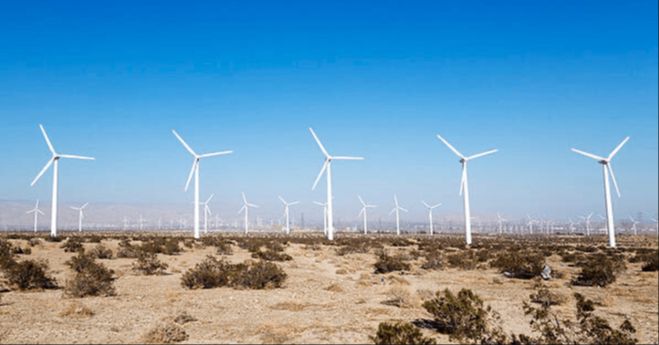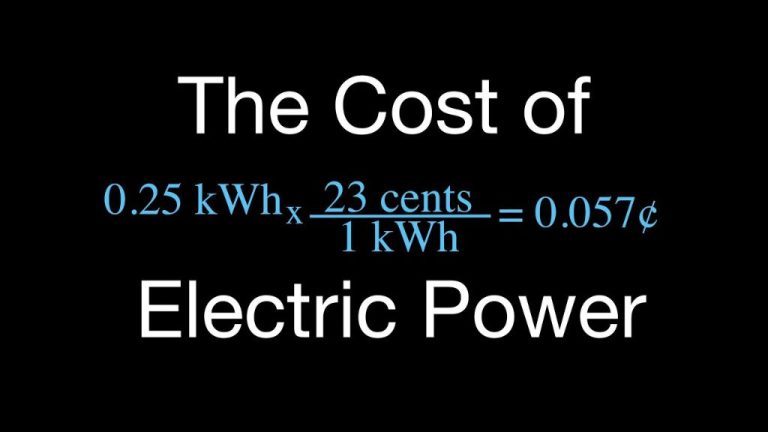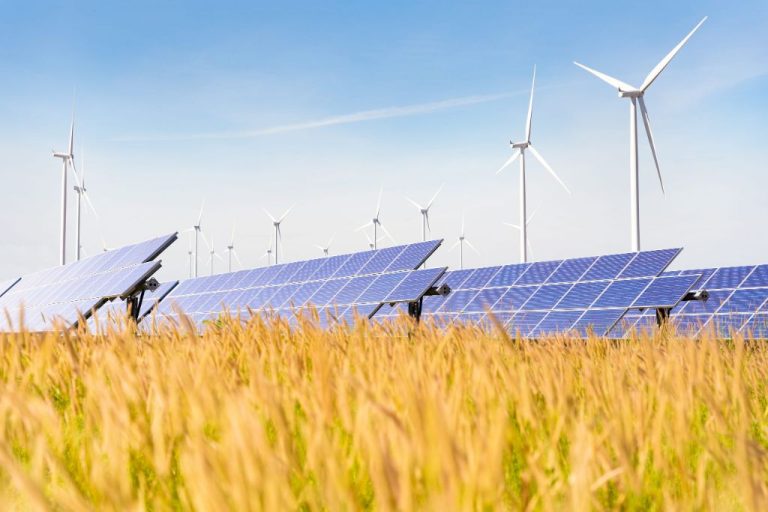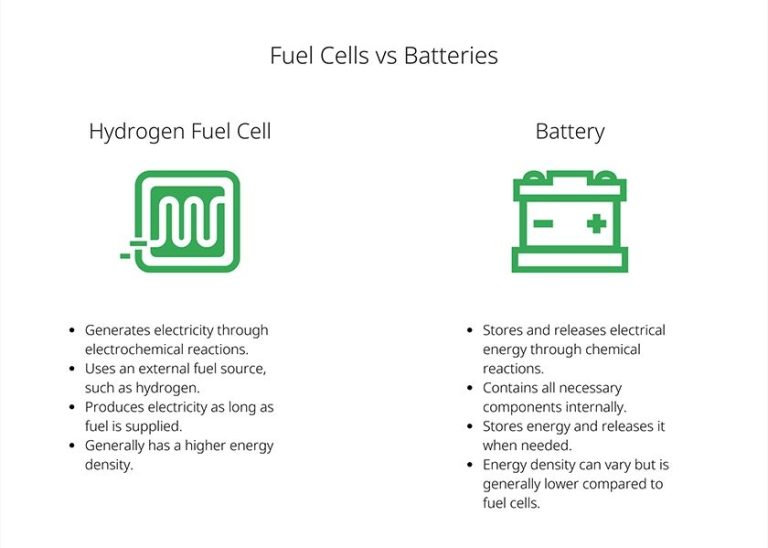Is Renewable Energy An Environmental Issue?

Renewable energy sources like solar, wind, hydropower, geothermal, and biomass provide an alternative to fossil fuels. Renewable energy is derived from naturally replenishing resources, making it more sustainable than finite resources like oil, coal, and natural gas. Environmental issues refer to problems that affect the natural environment, such as pollution, habitat destruction, and climate change. This debate centers around whether renewable energy helps or harms the environment compared to conventional energy sources.
On one hand, renewable energy is praised for having lower emissions and less direct environmental damage than fossil fuels. However, all energy sources have environmental tradeoffs. Renewable projects still require land and resources that can disrupt ecosystems. The debate examines if renewable energy provides enough environmental benefits to justify continued investment and overcome any new challenges they pose. This content will analyze the key environmental considerations around renewables to gain a balanced perspective on this complex issue.
The Environmental Benefits of Renewable Energy
Renewable energy sources such as wind, solar, hydropower, geothermal, and biomass offer significant environmental benefits compared to fossil fuels. Most importantly, renewable energy generates little to no greenhouse gas emissions that contribute to climate change. According to the EPA, the use of renewable energy in 2018 avoided an estimated 200 million metric tons of carbon dioxide emissions in the United States alone1. The IPCC has identified the rapid transition to renewable energy as a key strategy for mitigating climate change and keeping global warming below 1.5°C.
Renewable energy systems also emit dramatically lower levels of air pollutants like particulate matter, nitrogen oxides, and sulfur oxides compared to burning coal, oil, and natural gas. Reduced emissions of these pollutants provides major public health benefits by lowering rates of respiratory disease, heart disease, and premature death. The development of renewable energy supports cleaner and healthier communities.
Generating energy from the wind, sun, and water has far less impact on natural habitats and wildlife compared to mining, drilling, and hydraulic fracturing required for fossil fuel extraction. While certain renewables like hydropower dams and wind turbines do pose some risks, overall renewable energy allows for greater ecosystem preservation. The transition to renewables makes sustainable energy production more feasible.
The Environmental Challenges of Renewable Energy
While renewable energy has many environmental benefits compared to fossil fuels, the development and operation of renewable energy systems can also lead to some negative impacts on the environment. Three key challenges are land use and habitat loss, materials sourcing and waste, and intermittency and storage.
Many renewable energy projects require large areas of land for infrastructure like solar arrays or wind turbines. This can disturb natural habitats and disrupt wildlife. For example, utility-scale solar farms in desert areas can impact threatened animal and plant species (https://nap.nationalacademies.org/read/12987/chapter/6). Careful siting and planning is needed to minimize the land use footprint.
Producing renewable energy systems requires raw materials that have to be mined and processed. The manufacturing of solar panels, batteries, and other components generates electronic waste at end of life that must be disposed of properly. There are concerns around sustainably and ethically sourcing materials for renewables.
The intermittent nature of renewables like solar and wind requires energy storage solutions to provide continuous power. Batteries can use hazardous materials and also create waste. Pumped hydro storage requires reservoirs that impact local water and land use. Managing intermittency remains an active challenge.
Public Perception and Support
Public opinion polling shows widespread support for renewable energy and taking action on climate change. A 2022 Pew Research Center survey found that 85% of Americans favor developing more solar panel farms, even if they need more land, while 78% support more wind turbine farms [1]. Two-thirds favor policies that would set strict carbon dioxide emission limits on existing coal-fired power plants to transition them away from fossil fuels.
In another 2023 Pew poll, 71% prioritized developing alternative energy sources like wind and solar, compared to just 22% who wanted to focus on expanding oil, coal and natural gas exploration. There is also broad support across party lines for transitioning to renewable energy – 90% of Democrats, 71% of Independents and 51% of Republicans say renewable sources should be prioritized [2]. This indicates renewable energy is not a partisan issue for most Americans.
Governments have implemented various incentives and policies to accelerate the transition to renewable energy and meet emissions reduction targets. These include investment tax credits, production tax credits, renewable portfolio standards, net metering policies, and other mechanisms aimed at spurring growth for wind, solar, geothermal, and other renewable sources.
The Economics of Renewable Energy
The costs of renewable energy have declined dramatically in the past decade, making it more competitive with conventional fossil fuels like coal and natural gas. According to a 2014 report from Boston University https://www.bu.edu/eci/files/2019/06/RenewableEnergyEcon.pdf, the levelized cost of electricity from wind and solar photovoltaics declined by 58% and 78% respectively from 2009 to 2014. This downward trend in costs can make renewable energy an economically attractive option.
In addition to direct costs, renewable energy also provides economic benefits through job creation. According to the National Renewable Energy Laboratory https://www.nrel.gov/gis/re-econ-potential.html, renewable energy generated over 500,000 jobs in the United States in 2019. Jobs are created in manufacturing, construction, operations, and more. However, integrating large amounts of renewable energy does come with grid integration costs as storage and transmission may need to be upgraded.
Key Renewable Energy Sources
There are several major renewable energy sources that are being used and adopted at increasing rates globally. These include:
Solar Energy
Solar energy systems use radiation from the sun to produce electricity and heat. Solar photovoltaic panels convert sunlight directly into electricity, while solar thermal collectors capture heat from the sun to warm water or air. Solar energy adoption has grown at an average annual rate of over 40% in recent years due to declining costs.https://www.eia.gov/energyexplained/renewable-sources/types-and-usage.php For example, India expanded its solar power capacity by 127% between 2014-2017 and aims to continue rapid growth to meet renewable energy targets.https://www.nrdc.org/stories/renewable-energy-clean-facts
Wind Energy
Wind energy harnesses the wind to generate mechanical power or electricity. Wind turbines convert wind energy into electricity that feeds into the grid. Global wind power capacity increased by over 10% in 2018 alone. Countries like Denmark generate over 40% of their electricity from wind power. Offshore wind farms are being built to capture stronger wind resources. https://www.eia.gov/energyexplained/renewable-sources/types-and-usage.php
Hydropower
Hydropower uses the energy of flowing water to produce electricity by passing it through a turbine connected to a generator. Hydropower accounts for over 16% of global electricity generation and provides reliable baseload renewable energy. However, growth has slowed in recent years due to resource constraints. https://www.nrdc.org/stories/renewable-energy-clean-facts
Geothermal
Geothermal energy harnesses heat from under the earth’s surface for direct heating or to generate electricity. High temperature geothermal resources provide cost-effective renewable baseload power, but growth potential is geographically limited. There is greater potential to expand lower temperature geothermal for direct heating. https://www.eia.gov/energyexplained/renewable-sources/types-and-usage.php
Biomass
Biomass converts organic matter like plants, wood, and waste into energy through combustion, gasification, pyrolysis, or anaerobic digestion. Biomass heating systems are mature technologies. Converting biomass into transportation fuels holds major growth potential as a renewable alternative to petroleum. https://www.nrdc.org/stories/renewable-energy-clean-facts
The Role of Renewable Energy in Climate Change Mitigation
Renewable energy sources play a critical role in reducing greenhouse gas emissions and mitigating climate change. According to the IPCC’s Special Report on Renewable Energy Sources and Climate Change Mitigation, the large-scale deployment of renewables could help limit global temperature rise to less than 2°C above pre-industrial levels by 2050 (IPCC, 2011).
The IPCC projects that under ambitious mitigation scenarios, renewable energy could supply 70-85% of global electricity by 2050 (IPCC, 2011). This rapid growth in renewables is essential to phase out fossil fuel use and achieve net-zero carbon emissions. The MIT Climate Portal explains that most modelled pathways to limit warming to 1.5°C require renewables to supply 50-90% of primary energy by 2050 (MIT Climate Portal, 2022).
Key renewable energy sources like solar, wind, hydropower and bioenergy have significant potential to displace carbon-intensive fuels. According to the IPCC, the technical potential for renewables exceeds global energy demands several times over (IPCC, 2011). Realizing even a fraction of this potential can drive deep decarbonization of the energy system.
While expanding renewables faces challenges like integration costs, intermittent supply, and infrastructure constraints, overcoming these hurdles is viewed as technically and economically feasible. With supportive policies and technological advances, renewables are poised to transform energy systems and serve as critical tools for climate change mitigation.
Criticisms and Concerns
While renewable energy has many benefits, it also faces some criticisms and challenges. Some of the main concerns raised about renewable energy include:
Intermittent power generation: Solar and wind power can only generate electricity when the sun is shining or the wind is blowing. This intermittency can cause issues for grid stability and reliability compared to consistent baseload power from fossil fuels or nuclear.Renewable energy debate
Land use: Renewable energy often requires large areas of land, especially for solar and wind farms. This land use can interfere with ecosystems, agriculture or other uses. Critiquing Criticisms of Renewables
High capital costs: While renewable energy itself has minimal operating costs, building the infrastructure like solar panels, wind turbines and transmission lines requires major upfront investments. The high capital costs can deter adoption and raise electricity prices initially.
Aesthetic concerns: Some renewable power installations like wind turbines or solar arrays are considered eyesores by local residents who object to the impact on landscapes and vistas. There are debates around weighing visual impacts vs climate benefits.Renewable energy debate
However, many of these criticisms have counter-arguments or can be addressed through careful planning, engineering and policy. For example, combining different renewable sources can balance out intermittency issues, while technological improvements are bringing down capital costs over time. Public engagement and community ownership models can also reduce local opposition to projects. With proactive strategies, the limitations of renewable energy do not outweigh its significant environmental and economic potential.
The Outlook for Renewable Energy
The outlook for renewable energy is promising, with projections showing significant growth and investment in the coming years and decades. According to the International Energy Agency (IEA), renewables are expected to account for 95% of the increase in global power capacity through 2026, with solar PV alone providing more than half of the expected growth (IEA, 2021). The IEA projects renewables will overtake coal as the largest source of electricity generation worldwide by 2025. Investment in renewable power capacity also continues to accelerate, reaching over $820 billion globally in 2021.
There are several key factors driving the positive outlook for renewables. Costs for renewable energy technologies, especially solar and wind, have declined dramatically in recent years making them increasingly competitive with fossil fuels (DOI, 2020). Governments around the world are establishing policies, incentives, and mandates to spur the growth of renewables as part of efforts to address climate change and air pollution. Technological improvements are also enabling increased efficiency and performance. Renewable energy is seen as crucial for meeting expanded electricity demand in developing nations.
However, renewables still face challenges to realize their full potential. These include policy and regulatory uncertainty in some markets, grid integration complexities, lack of transmission infrastructure, and financial barriers (Earth.org). But there are solutions being implemented such as upgraded grids, energy storage, microgrids, and virtual power plants. Overall, the outlook is bright for renewables to supply an increasing share of global energy demand.
Conclusion
In conclusion, renewable energy sources like solar, wind, and hydropower provide substantial environmental benefits over fossil fuels. By generating electricity without emitting greenhouse gases, renewables can help mitigate climate change and reduce air pollution. Widespread adoption of renewables could thus provide a pathway to a more sustainable energy system.
However, renewables also have environmental challenges that must be addressed. These include land use changes, habitat loss, and threats to wildlife from wind turbines and hydropower dams. There are also intermittency issues with solar and wind power that require storage solutions and complementary energy sources.
While renewables alone cannot solve all of our environmental problems, they represent an important piece of the puzzle. With thoughtful policies and planning, renewable energy can continue growing as a climate-friendly alternative to fossil fuels. But the transition will take time and will require surmounting economic and technical hurdles. Overall, renewables present an environmental solution with real promise, if their challenges are properly managed.






